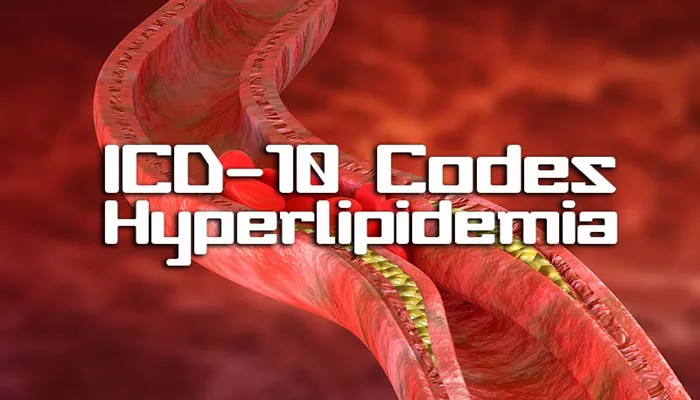Hypercholesterolemia is a common metabolic disorder characterized by elevated levels of cholesterol in the blood. It is a major risk factor for cardiovascular diseases such as coronary artery disease, stroke, and peripheral arterial disease. The condition can be classified and coded in medical records using the ICD-10 system, with the primary code for pure hypercholesterolemia being E78.00. This article provides a detailed overview of hypercholesterolemia, including its causes, symptoms, and treatment options, aimed at both healthcare professionals and patients seeking to understand the condition better.
What Is Hypercholesterolemia? (ICD-10 Code E78.00)
Hypercholesterolemia refers to an abnormally high concentration of cholesterol in the bloodstream. Cholesterol is a fatty substance essential for the formation of cell membranes, hormones, and vitamin D. However, excessive cholesterol, especially low-density lipoprotein cholesterol (LDL-C), can lead to plaque buildup in arteries, causing atherosclerosis and increasing the risk of heart attack and stroke. The ICD-10 code E78.00 specifically denotes “pure hypercholesterolemia, unspecified,” meaning elevated cholesterol levels without a more specific identified cause or subtype.
Causes of Hypercholesterolemia
Hypercholesterolemia arises from a combination of genetic and environmental factors:
Genetic Factors: Familial hypercholesterolemia (FH) is a hereditary form caused by mutations in genes such as LDLR, APOB, or PCSK9. It leads to very high LDL cholesterol levels from birth and affects about 1 in 250 people worldwide.
Diet: Diets high in saturated fats, trans fats, and cholesterol can raise blood cholesterol levels. Excessive sugar intake also contributes. Conversely, plant-based diets and healthy fats can help lower cholesterol.
Medical Conditions: Certain illnesses like diabetes mellitus type 2, hypothyroidism, nephrotic syndrome, and Cushing’s syndrome can increase cholesterol levels. Some medications, including thiazide diuretics, beta blockers, and glucocorticoids, may also affect lipid metabolism.
Lifestyle Factors: Obesity, physical inactivity, smoking, and excessive alcohol consumption contribute to elevated cholesterol levels and worsen cardiovascular risk.
Symptoms of Hypercholesterolemia
Pure hypercholesterolemia itself is typically asymptomatic and often detected incidentally through blood tests measuring lipid profiles. However, when high cholesterol causes atherosclerosis, symptoms related to cardiovascular disease may appear, including:
- Chest pain or angina
- Shortness of breath
- Fatigue
- Pain or numbness in limbs (possible stroke signs)
These symptoms indicate advanced arterial disease and require urgent medical evaluation.
Diagnosis
Diagnosis is confirmed by a lipid profile blood test measuring:
- Total cholesterol
- LDL cholesterol (bad cholesterol)
- HDL cholesterol (good cholesterol)
- Triglycerides
Non-HDL cholesterol is also calculated to assess cardiovascular risk. Genetic testing may be done for suspected familial hypercholesterolemia.
Treatment of Hypercholesterolemia
1. Lifestyle Modifications
The first line of treatment focuses on lifestyle changes:
Adopt a heart-healthy diet rich in fruits, vegetables, whole grains, and plant-based oils; limit saturated fats, trans fats, and dietary cholesterol.
Engage in regular physical activity (at least 30 minutes, 5 days a week).
Maintain a healthy weight.
Avoid smoking and limit alcohol intake.
2. Medications
When lifestyle changes are insufficient, pharmacologic therapy is necessary, especially in familial hypercholesterolemia or high cardiovascular risk patients:
Statins: These are the most commonly prescribed drugs that inhibit cholesterol synthesis in the liver, effectively lowering LDL cholesterol. Examples include atorvastatin, rosuvastatin, and simvastatin.
Ezetimibe: This medication reduces intestinal absorption of cholesterol and is often added if statins alone do not achieve target LDL levels.
PCSK9 Inhibitors: These injectable drugs (e.g., alirocumab, evolocumab) increase LDL receptor activity, dramatically lowering LDL cholesterol, particularly in statin-resistant or familial cases.
Other Agents: Bile acid sequestrants, bempedoic acid, lomitapide, and newer therapies may be used in specific cases or severe familial hypercholesterolemia.
3. Advanced Treatments
In severe familial hypercholesterolemia, additional interventions include:
Lipoprotein apheresis: A procedure that filters LDL cholesterol from the blood periodically.
Liver transplantation: Considered in rare, extreme cases.
Conclusion
In summary, hypercholesterolemia (ICD-10 code E78.00) is a prevalent metabolic disorder that requires careful evaluation and management to prevent serious cardiovascular complications. Understanding its causes, recognizing the often silent nature of the disease, and implementing effective treatment strategies can improve patient outcomes and reduce the burden of heart disease.
Related topics:


